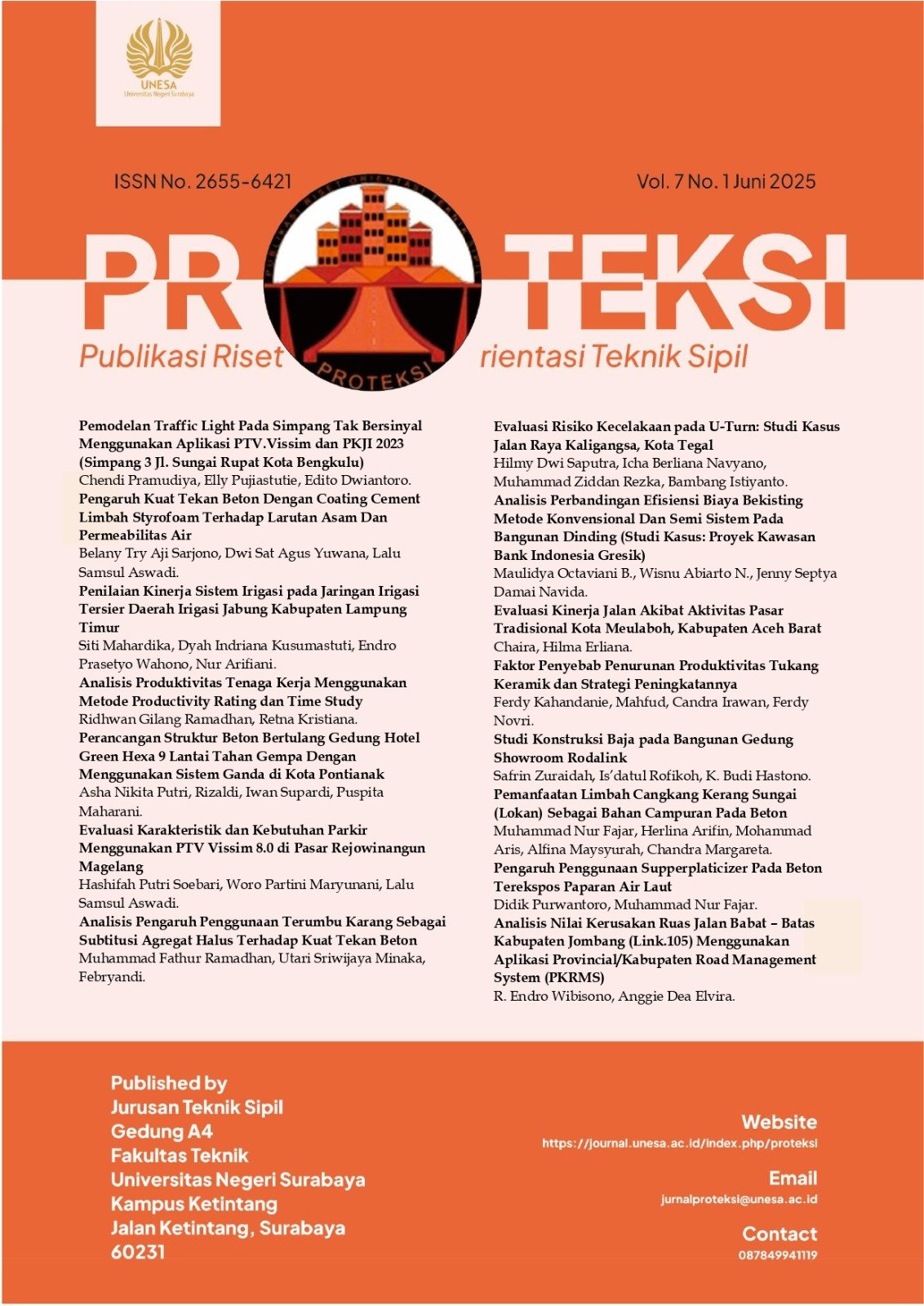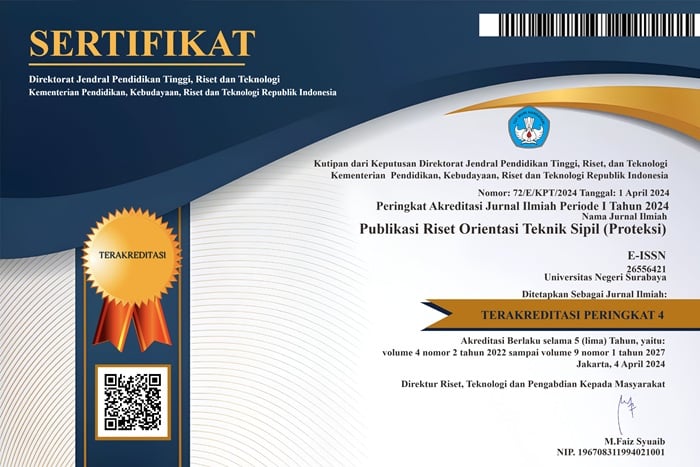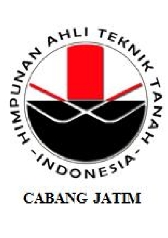The Effect of Compressive Strength of Concrete with Styrofoam Waste Cement Coating on Acid Solution and Water Permeability
Pengaruh Kuat Tekan Beton Dengan Coating Cement Limbah Styrofoam Terhadap Larutan Asam Dan Permeabilitas Air
DOI:
https://doi.org/10.26740/proteksi.v7n1.p8-16Keywords:
concrete, Natrium Sulfat acidic solution, styrofoam cement coatingAbstract
This research analyze the effect of styrofoam cement coating as a protective layer on normal concrete in terms of physical quality and compressive strength when exposed to Natrium Sulfat acidic solution. Styrofoam-based cement coating is chosen due to water-resistant physical properties and its ability to reduce difficult-to-decompose waste. The method related to the effect of cement styrofoam coating as a liner with cylindrical concrete test objects measuring 15 cm in diameter and 30 cm in height and a quality of fc' 20 MPa, where its implementation is based on SNI 7656-2012. The cement coating used utilizes various mixture ratios of 0%, 40%, 50%, and 60% of the solvent weight in the form of Pertalite. The process of immersion in sodium sulfate acid solution, compressive strength testing, and permeability testing were conducted in the Laboratory, Universitas Tidar. The results indicate that the addition of styrofoam cement coating can reduce the corrosive impact of Natrium Sulfat acidic solution. The 60% styrofoam mixture variation showed the best results in three testing aspects: a post-curing compressive strength test value of 21.3621 MPa, a post-immersion in Natrium Sulfat acidic solution compressive strength test value of 20.7680 MPa, and a permeability test value of 7.03x10-9.
References
ACI Committee 522. (2011). Report on Pervious Concrete:ACI 522R-10. America Concrete Institute.
ASTM C 596-01. (2001). Standard Test Method for Drying Shrinkage of Mortar Containing Hydraulic Cement. ASTM Internasional.
ASTM C1012-04. (2010). Standard Test Method for Length Change of Hydraulic-Cement Mortars Exposed to a Sulfate Solution. ASTM International.
Hsu K. (2019). Development of waste expanded polystyrene flexible coating material in concrete waterproofing. IOP Conference Series Earth and Environmental Science, 351(1), 1–10.
Hunek D B, Jacek Gora J, & Widomski M K. (2021). Durability of Hydrophobic/Icephobic Coatings in Protection of Lightweight Concrete withWaste Aggregate. Materials, 1–20.
Jati N S N, Salsabila R D S, Susanti R, & Hartono. (2023). Inovasi Waterproofing coating cement based dengan pemanfaatan limbah Styrofoam. JURNAL BANGUNAN, 28(2), 1–10.
Liu P, Chen Y, Yu Z, & Lu Z. (2019). Effect of sulfate solution concentration on the deterioration mechanism and physical properties of concrete. Construction and Building Materials, 227, 116641–116650.
Murdana A F R, & Kurniawan D B. (2018). Pemanfaatn Limbah Styrofoam sebagai bahan Alternatif Pembuatan Perekat Pipa PVC dengan Proses Mixing.
SNI 03 1970-2008. (2008). Pemeriksaan Berat Jenis Dan Penyerapan Air Agregat Halus. Badan Standarisasi Nasional.
SNI 03 1971-1990. (1990). Kadar Air. Badan Standarisasi Nasional.
SNI 03 2834-2000. (2000). Cara Uji Berat Jenis dan Penyerapan Air Agregat Halus. Badan Standarisasi Nasional.
SNI 03 4804-1998. (1998). Metode Pengujian Berat Isis dan Rongga Udara dalam Agregat. Badan Standarisasi Nasional.
SNI 1974-2011. (1990). Metode Pengujian Kuat Tekan. Badan Standarisasi Nasional.
SNI-7656:2012. (2012). Tata cara pemilihan campuran untuk beton normal, beton berat dan beton massa. Badan Standarisasi Nasional.
SNI 8665:2018. (2018). Cat pelapis antibocor berbasis air. Badan Standarisasi Nasional.
Untu G E, Ardiansyah M R, & Syaiful M. (2021). Pengaruh Pembakaran terhadap Kuat Tekan Beton dan Perawatan Pasca Bakar. Seminar Nasional Hasil Penelitian & Pengabdian Kepada Masyarakat (SNP2M), 6(1), 17–20.
Wijaya R R, Antoni, & Hardjito D. (2017). Ketahanan di Lingkuan Asam . Jurnal Dimensi Pratama Teknik Sipil, 1–7.
Zhang Y, Li H, Yang j, & Abdelhady A. (2020). Comparative laboratory measurement of pervious concrete permeability using constant-head and falling-head permeameter methods. Construction and Building Materials, 235(120614), 120614–120624.
Downloads
Published
Issue
Section
License
Copyright (c) 2025 Belany Try Aji Sarjano, Lalu Samsul Aswadi, Dwi Sat Agus Yuwana

This work is licensed under a Creative Commons Attribution-NonCommercial 4.0 International License.
 Abstract views: 159
,
Abstract views: 159
, PDF Downloads: 155
PDF Downloads: 155










